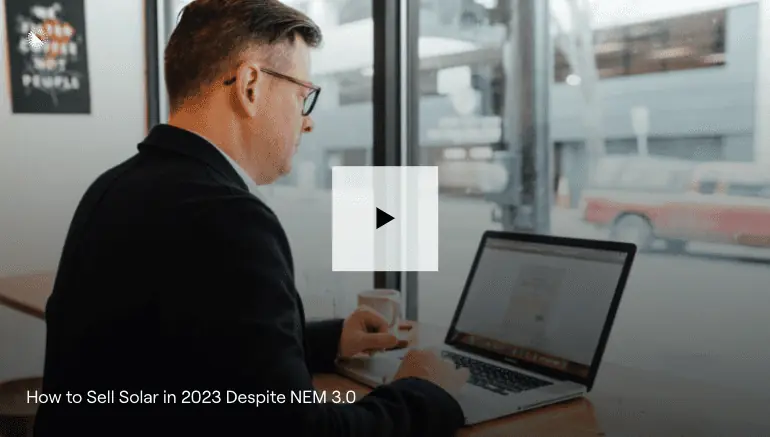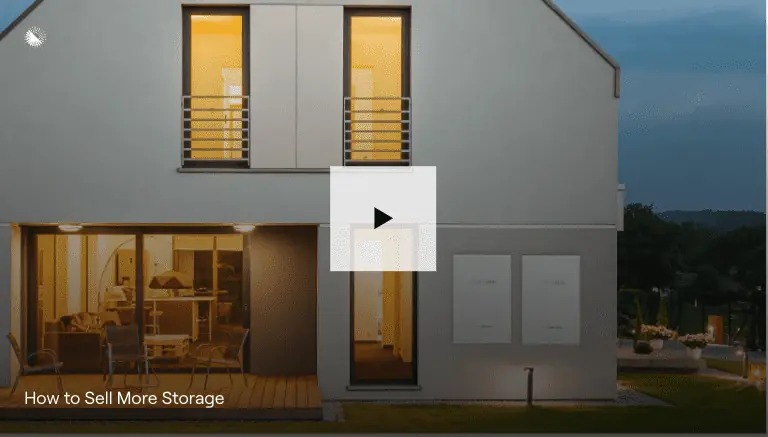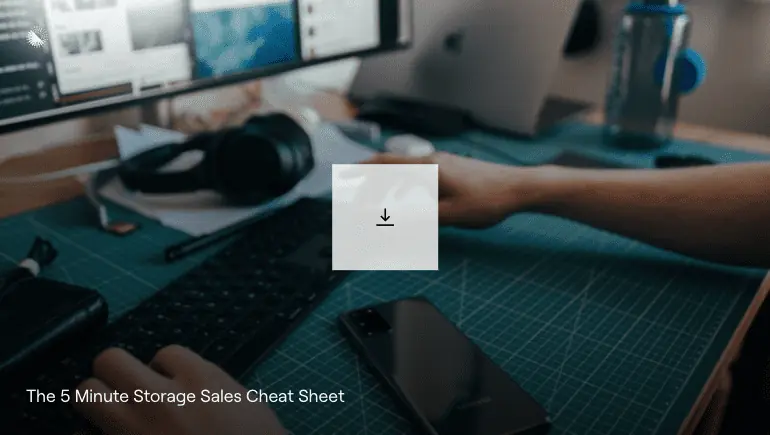Want to learn more about the solar industry? Join us for Empower 2024 on June 5-6! You’ll hear from industry experts on everything from what’s next for battery storage and VPPs, to how AI is affecting the industry, and more.

If you’ve ever struggled with a potential customer’s objections around buying battery storage, you’re not alone. Although battery storage can deliver great value to many homeowners, some still need extra convincing before they feel comfortable adding a battery storage solution to their solar install.
In this post, we’ll cover three of the most common battery storage objections — and provide some strategies for overcoming them and increasing your battery storage sales.
Storage objection 1: fast ROI
A very common hurdle is the conversation about ROI. Some customers are focused on getting a return on their investment (ROI) fast, but in many cases keeping the conversation centered around ROI is a losing battle. Battery storage takes a lot of time to pay itself off — if at all.
There is now, however, a huge exception to the rule in California under the new Net Billing Tariff (aka NEM 3.0). With NEM 3.0’s revised time-of-use and export rates, battery storage can make real financial sense. In our NEM 3.0 FAQ post, Aurora engineer Andrew Gong addresses the topic:
“A battery provides the opportunity to take energy that would have been exported to the grid at a low rate (4-8 cents per kWh) and use it later for self-consumption (30-80 cents per kWh) or export it during times of high grid need (up to 3 dollars per kWh).
“There’s no one-size-fits-all design, but right now we think an appropriate strategy is to size the batteries to take up most of your average daily excess kWh (that’s the energy that would be sent to the grid) for the spring and summer months. For example, if the system would send an average of 10 kWh per day to the grid in April, you can pick a battery system that has 8-12 kWh of usable capacity.”

For those not operating in California, it’s important to ask your customers questions to learn why they’re focused on a fast ROI and exactly what it means to them. Some good questions are:
- What does fast ROI mean to you?
- Have you done any research into the ROI of storage?
- Have you received any quotes from other providers offering ROI?
Asking questions like these gives you the opportunity to help them better understand the benefits of battery storage outside of ROI. A good way to approach this is by shifting the conversation towards peace of mind by asking questions like, “What would it cost you if the power went out and you couldn’t work for a few days?”
Storage objection 2: 100% backup
Some homeowners are under the impression that they need a battery that can backup 100% of their energy use for several days. This option will likely give them sticker shock when they see the battery capacity required.
If you run up against this objection, you can explain that backing up all of their energy usage is expensive and rarely necessary, but how you explain it is very important.

Here’s one strategy:
1 — Uncover their needs
Dive deeper into your customer’s position on storage by asking them why they think they need 100% backup. Some good questions are:
- How did you come up with your storage needs so I can better understand which system would be best for you?
- What’s your ideal budget for storage?
Once you better understand why the customer is asking for 100% backup, it’ll be easier to steer them towards a more realistic proposal.
2 — Show them different options
If you show your customer what a 100% backup plan will look like, they may change their mind on their own. Start with modeling a system based on what they say they want, then show them several other easy-to-understand options that you can have a conversation around.

Storage objection 3: high pricing
Sure, this is related to ROI, but since it’s perhaps the biggest storage objection of all it deserves its own section. No matter how interested a customer may be in battery storage, the price can often scare them away. When price invariably comes up, there are some options that can help:
Financing options and loans
If the price of a battery seems too high for your customer, explain that there are several ways to avoid paying in one lump sum. You can tell them about financing programs, leasing options, and any available loans. These include options such as PACE loans, which add the cost of battery storage to their property tax.
Tax incentives
You can also bring up any available rebates and credits. This is still top of mind with the passage of the Inflation Reduction Act (IRA). Among its biggest benefits is the extension of the Investment Tax Credit for a full 10 years at its original 30% — which has been clarified to absolutely include storage.
Leasing battery storage
Some solar companies have programs where they lease the battery to the homeowner. The benefits of leasing are very similar to those of leasing a car, or anything else: lower upfront costs, and if the battery gets damaged or stops working, the homeowner isn’t on the hook to replace it out of their own pocket.
Here are some good questions to kickstart the pricing conversation:
- There are financing options that would allow you to make monthly payments. Would you like to hear about them?
- Are you interested in hearing more about leasing or loan options?
- There may also be storage incentives that you qualify for. Have you looked into these?
The tools to use
Explaining battery storage options is no easy task, especially when it’s on top of explaining an entire solar installation. Having software tools to help present options in the clearest possible way is critical to success.
A tool that lets you model self-consumption and backup is critical, especially considering California’s Net Billing Tariff. Walk through the example below to see how Aurora can make presenting both options a snap, and easy for any customer to understand.
In closing…
From California’s Net Billing Tariff, to tax incentives, to energy security, battery storage is becoming more popular seemingly every day. But, you still have to sell it.
With these techniques, and the right software to help, you can add a valuable revenue stream to your solar business.
Have more questions? Schedule a quick, no-pressure demo to learn more, or click the chat to the right to get the info right now.


